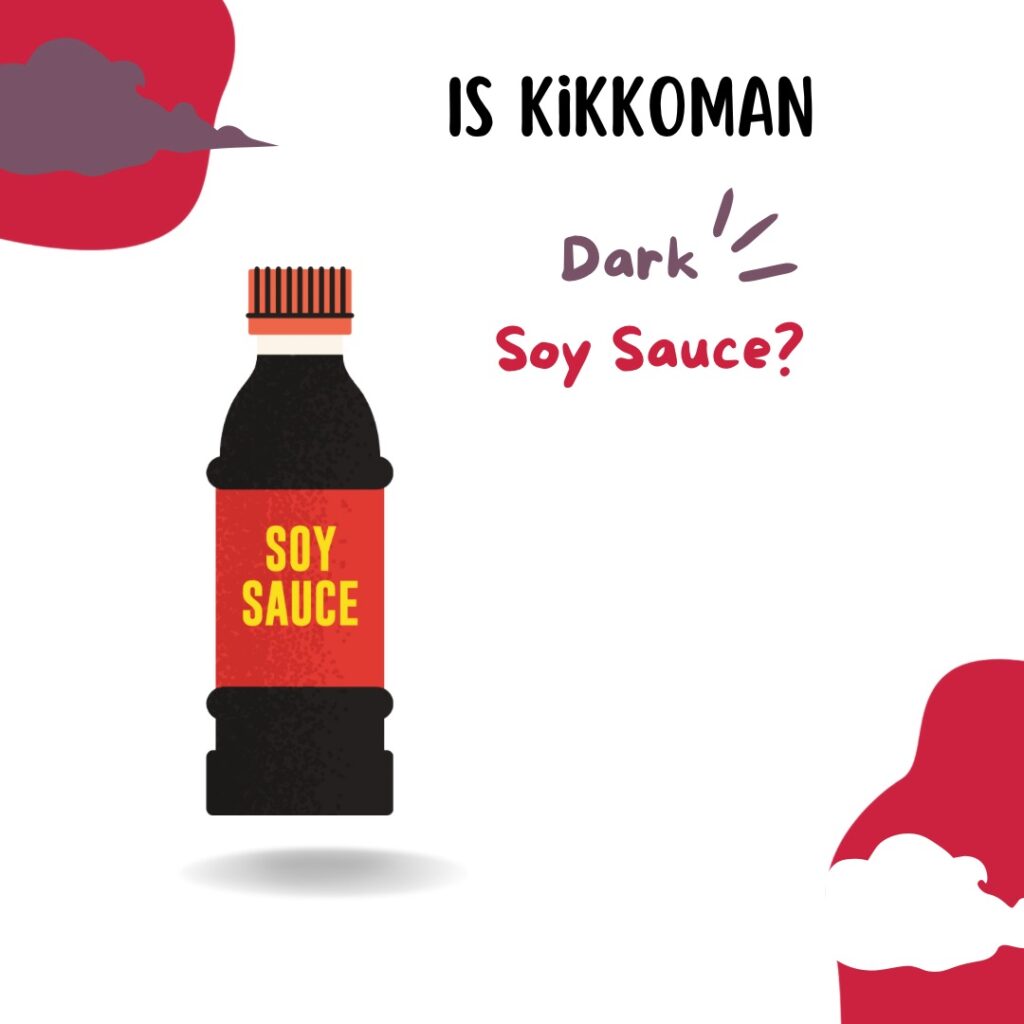When it comes to popular brands of soy sauce in the States, Kikkoman often takes center stage.
But with the many different forms and shapes of soy sauce available out there, where exactly does Kikkoman stand?
Is it a dark soy sauce or a light one? Is Thick soy sauce? Shoyu? Tamari?
Pause a bit and take a deep breath!
Exhale while knowing that we got you covered!
In this article, you’ll learn exactly where Kikkoman stands in the soy sauce spectrum, as well as the difference between dark and light soy sauce and how to tell if your soy sauce at home is either.

Is Kikkoman Soy Sauce Light or Dark Soy Sauce?
All Kikkoman soy sauces from the Organic and NON-GMO bottles to the Gluten Free, Aromatic Shoyu and the Double Fermented ones are actually a type of dark soy sauce – just take a look at their deeper color!
This is because they’re left to ferment for an extended period (6 months and above), allowing them to develop complex flavors and that distinctive reddish-brown hue.
In contrast, light soy sauces typically undergo a shorter fermentation process, lasting only a couple of months which prevents them from developing those deeper colors and tastes while simultaneously allowing them to become saltier, as there’s less time for the cultures to eat up the protein and develop a more nuanced flavor profile.
Sometimes, the lighter color results from using fewer soybeans and more wheat in the mix, but don’t take color as the only distinguishing factor between light and dark soy sauce.
One important difference between the two sometimes is their thickness, with dark being the thicker of the two.
For some dark soy sauces, like Kikkoman’s sweet soy sauce for rice variety, the thicker consistency comes from the addition of sugar, syrup and molasses. These ingredients are usually absent in light soy sauces.
What Color Is Kikkoman Soy Sauce?
Kikkoman soy sauce boasts a beautiful, distinct reddish-amber hue (or reddish brown hue) that sets it apart from other soy sauces on the market.
This distinctive reddish-brown color is not just pleasing to the eye but also indicative of the meticulous brewing process and high-quality ingredients used in creating this beloved sauce.
The unique coloration of Kikkoman soy sauce can be attributed to its traditional fermentation method, which involves combining soybeans, wheat, salt, sugar, syrup and water.
Is There Another Name For Dark Soy Sauce?
Yea, dark soy sauce goes by several different monikers according to how it is made and the region where it is coming from.
Here are some of the most common names used for dark soy sauce.
Thick Soy Sauce
This name emphasizes the rich, viscous texture of this variety caused by the inclusion of sugar, molasses and starch thickeners, all while heating them.
Old Soy Sauce
By calling it ‘old’, we’re referring to the extended fermentation process that dark soy sauce undergoes which gives it a more complex flavor profile and darker hue. Dark soy sauces are typically fermented for longer than 6 months where as their lighter counterparts (and anything in between) are fermented for lesser than that!
Kecap Manis
Hailing from Indonesia, this version of dark soy sauce is sweetened with palm sugar and infused with various spices to make it a perfect accompaniment for various Southeast Asian dishes.
Tamari
A Japanese take on dark soy sauce, tamari is traditionally made without wheat, resulting in a gluten-free option that boasts a smoother taste and thicker consistency than regular light soy sauce.
Double Fermented
This term can actually be used to refer to both light and dark soy sauce.
It highlights the fact that soy sauce undergoes not just one but two rounds of fermentation – meaning once to obtain the regular soy sauce (that isn’t pressed out from the mash yet), and second, which submerges the mash for the second time in a soy sauce obtained from a separate fermentation process (and not brine), in order to achieve its distinctive depth of color and flavor.
Dark Soy Sauce Brands
If you’re looking to elevate your dishes with dark soy sauce, here are some popular brands that deserve a spot in your pantry.
Kikkoman
Kikkoman is a household name in the world of soy sauce, and it offers a high-quality dark soy sauce that’s perfect for marinating meats, stir-fries and dipping sauces.
Kikkoman soy sauces comes in many different varieties from the Non genetically modified products to organic and double fermented.
Lee Kum Kee
Founded in 1888, Lee Kum Kee has been producing authentic Chinese sauces for over a century. They offer a wide variety of soy sauces of which the dark soy sauce is a part.
Their dark version of soy sauce is known for its rich aroma and deep color – perfect for adding an extra layer of complexity to your favorite dishes.
Other types of soy sauces offered by the brand include chili soy sauce, double fermented soy sauce and gluten free soy sauce.
Pearl River Bridge
Hailing from China’s Guangdong province, Pearl River Bridge offers an exceptional range of soy sauces including their popular dark variety.
One version of their dark soy sauce is mushroom flavored while another is seasoned for seafood, making them perfect for use in soups on veggies and on seafood.
Generally, their dark soy sauces have a full-bodied flavor and lingering sweetness.
Kimlan
This Taiwanese brand is praised for its top-notch quality and commitment to traditional brewing methods. Kimlan’s dark soy sauce contains caramel which makes it adopt bold flavors and velvety texture.
Yamasa
With over 350 years of brewing experience under their belt, Japan-based Yamasa crafts artisanal-grade soy sauces that cater to discerning palates worldwide. Their dark soy sauce delivers just the right balance between sweetness and saltiness, making it a versatile choice for various dishes.
Frequently Asked Questions
Is Kikkoman All Purpose Soy Sauce Light Or Dark Soy?
Kikkoman All Purpose Soy Sauce is dark soy sauce that can function as both dark and light soy sauce, hence the name. It is made by long fermentation of soybeans and wheat which produces the distinctive red hue coloration as well as brilliant taste.

